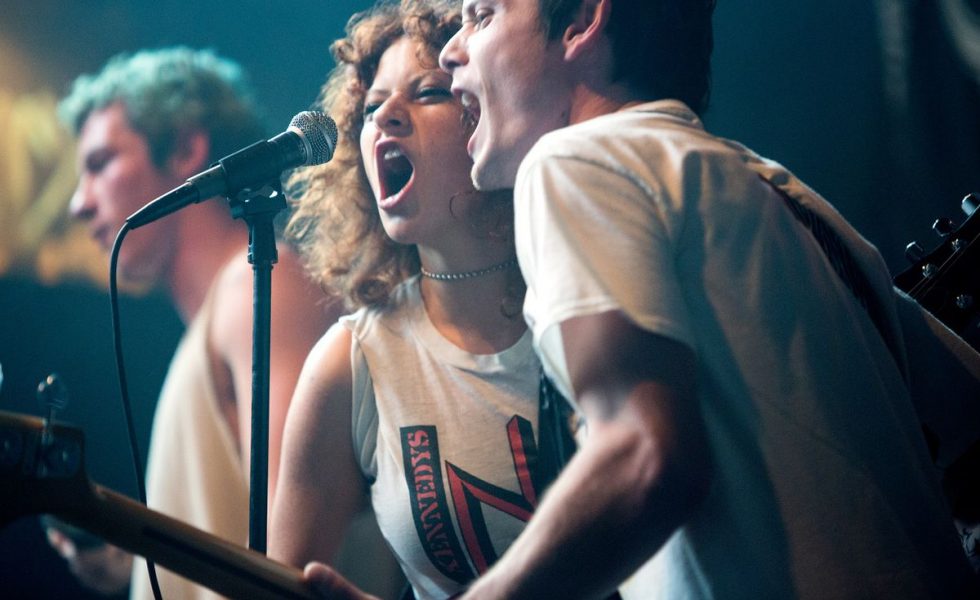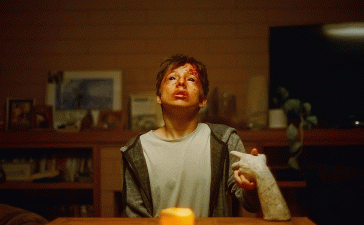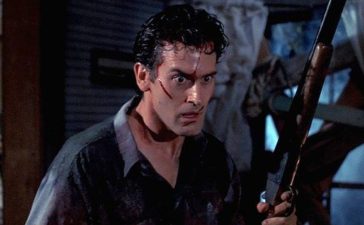It’s a little counter-intuitive that the relatively pricey practice of filmmaking and the rough and ready DIY world of punk music have much to do with each other, but you’d be amazed at the seemingly disparate things in this world that have some overlap, and in those places the strangest fruit seems to grow.
There is plenty of connective tissue between indie music and indie cinema, and maybe we’ll go down that road further down the line. But for now, let’s set our boots on the path of movies about punk.
For a musical genre that frequently invokes aggression, alienation, and anti-authoritarianism, punk has proved to be fertile ground for film going right back to its first bloom in ‘70s Britain. Derek Jarman’s Jubilee (1978) is a useful ground zero, a satirical urban fantasy that sees Queen Elizabeth I transported through time to an apocalyptic ‘70s London, were she hangs out with the likes of Adam Ant and Siouxsie Sioux. It’s an anarchic, largely plotless flick steeped in the aesthetic, if not the ethos, of punk.
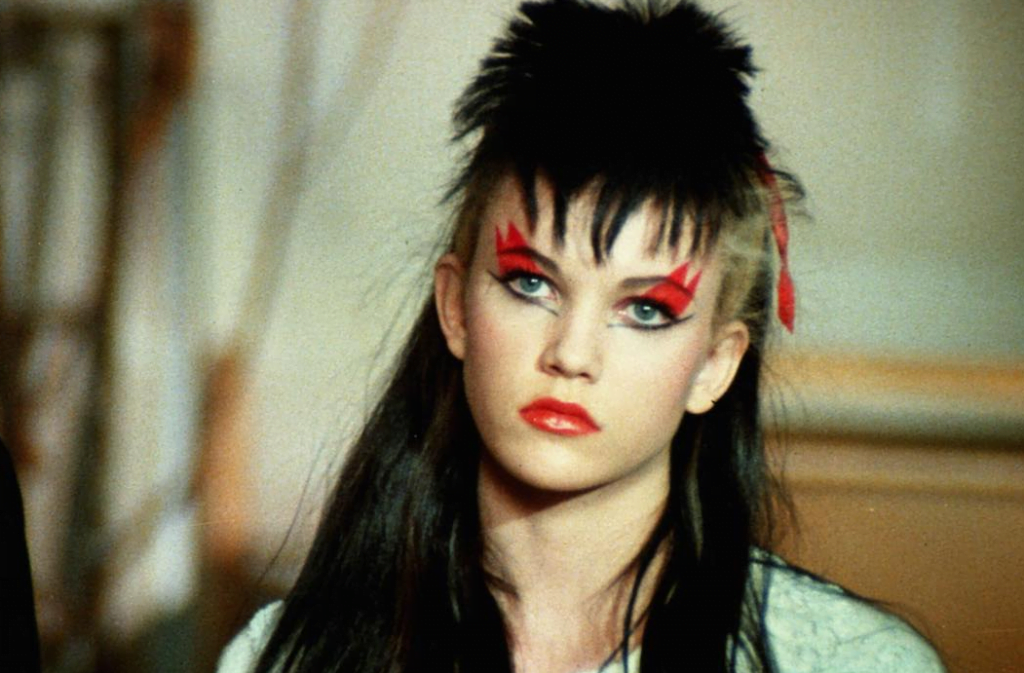
Vivienne Westwood decried it, but then her old sparring partner Malcolm McLaren gave us The Great Rock ‘n’ Roll Swindle, directed by Julien Temple, in 1980, two years after the Sex Pistols broke up (a shambolic attempt at courting controversy in order to milk a few more bucks out of the scene). It’s a mess, but it’s a mess in which you get to see Sid Vicious sing ‘My Way’, so worth a look. 20 years later Temple made The Filth and the Fury, an account of the Pistols’ rise and fall from the band’s perspective, to balance the books. If you’re planning on catching up, maybe make your watching session a double feature.
Across the pond, we got The Ramones in Allan Arkush’s delightful Rock ‘n’ Roll High School (1978), perhaps the fluffiest punk movie ever, with PJ Soles’ enthusiastic teenybopper moving heaven and earth to get the bruvvers to play at her high school dance. It’s a straight up delight of a film, finding joy rather than anger in rebellion.
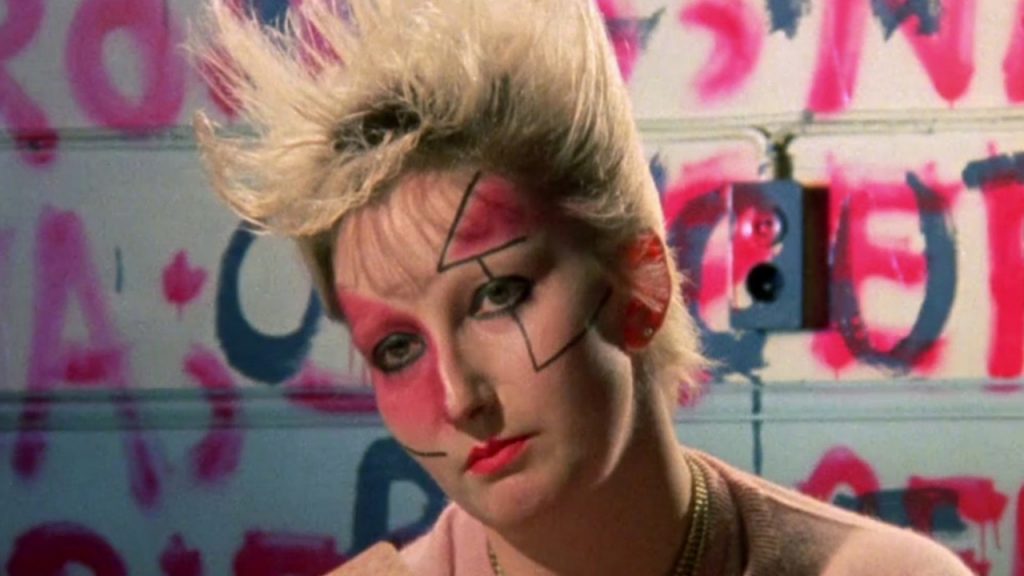
Things got more serious as the ‘70s gave way to the ‘80s, with a couple of films focusing on young, female runaways delving into the punk scene. Allan Moyle’s Times Square (1980) follows two runaways from a mental health facility as they try to carve out a life for themselves in the titular slum, forming a band under the tutelage of Tim Curry’s radio DJ. Meanwhile Susan Seidelman’s Smithereens (1982) gives us a wannabe punk (Susan Berman) who finds that the New York City scene has all but vanished. Tracks here descend into homelessness and prostitution, with punk icon Richard Hell playing a significant supporting part. That same year, Ladies and Gentlemen, the Fabulous Stains (1982), sees Diane Lane and Laura Dern as members of an all-girl punk band trying to make it big, with cameos from Steve Jones and Paul Cook of the Sex Pistols, and Paul Simonon of The Clash.
But the two most significant voices in ‘80s punk cinema were Penelope Spheeris and Alex Cox. Spheeris, years before Wayne’s World, made a good fist of immortalising the punk scene in both documentary and feature; her landmark 1981 documentary, The Decline of Western Civilization, is a blistering look at the Los Angeles punk scene, and prompted then LAPD chief Daryl Gates to call for its banning within the city. Two years later, her fiction film Suburbia (1983) followed a group of young runaway punks as they squat in abandoned tract homes, a bleak indictment of suburban malaise and alienation that was punctuated with gigs by T.I., T.S.O.L. and The Vandals. Also, Flea shows up.

For his part, Cox gave us the immortal Repo Man (1985), a bizarre satirical sci-fi in which Emilio Estevez’s disaffected L.A. punk teams up with Harry Dean Stanton’s car repossessor to track down a Chevy Malibu that may be a U.F.O, a time machine, or both. A deeply, deliberately weird ride through a collapsing society, it features a kick ass theme by Iggy Pop, plus songs and appearances by The Circle Jerks. Two years later, Cox decamped to the UK to give us Sid and Nancy, with Gary Oldman as the doomed bassist and Chloe Webb as his equally doomed muse.
Roughly around the same time, Richard Lowenstein was making Australia’s definitive punk movie, Dogs in Space (1986), a scattershot tour through Melbourne’s “little bands” scene of the ‘70s, with Michael Hutchence as the lead singer of the titular hopeless band. A bona fide cult classic, it’s also a fine example of the archival power of cinema, with Lowenstein filling the soundtrack with work by local outfits whose work would otherwise have gone unremarked (and, again, Iggy Pop).
Things get patchier in the ‘90s, but James Merendino’s SLC Punk! (1998) is worth your time, if only for Matthew Lillard’s winning performance as a young punk struggling to keep it real in conservative Salt Lake City, Utah. Further north we get Hard Core Logo (1996) by Bruce McDonald, a mockumentary following the titular band on a catastrophic reunion tour. Obscure now, it’s a cult classic in its native land.

But there’s been a definite upswing over the last decade or so, starting with 2007’s What We Do Is Secret, a biopic of The Germs front man Darby Crash (Shane West), tracing his troubled life and art up until his 1980 suicide. It’s certainly a clear cut above CBGB (2013), which stars Alan Rickman as Holly Krystal, owner of the famous NYC punk venue, and features all the names you could want (The Ramones! Iggy! Debbie! Patti!) and none of the heart.
Better is the slight but fun How to Talk to Girls at Parties (2017), directed by Hedwig and the Angry Inch’s John Cameron Mitchell. Notable for being adapted from a Neil Gaiman short story and starring Nicole Kidman as a punk scene queen, it follows in Repo Man’s footsteps as a punk sci-fi, with Elle Fanning’s rebellious alien princess hooking up with Alex Sharp’s punk cartoonist in ‘70s London. It’s enjoyable enough stuff, but the pall of nostalgia blunts any potential edge.

Far better, then, to stick with the fictional but emotionally truthful Green Room (2015), in which the late Anton Yelchin’s hardcore band find themselves trapped in a bar owned by Nazi skinheads (led by Patrick Stewart!) and have to fight their way out. An unflinchingly bloody survival horror flick, by the time the credits roll a lot of the cast are dead…
But the punk spirit survives.
Ed. Note: Anton Yelchin tragically passed away in 2016. His parents have memorialised his life in the beautiful documentary Love, Antosha, which you can check out on Google Play.


